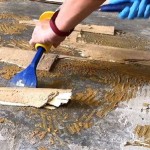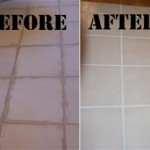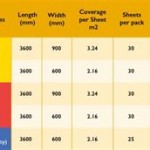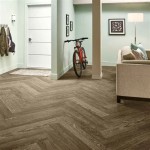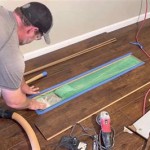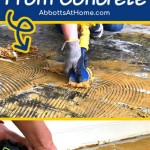Can You Use Carpet Tape On Hardwood Floors? Understanding the Risks and Alternatives
Hardwood floors are a desirable feature in many homes, prized for their beauty, durability, and ease of maintenance. When incorporating area rugs into a room with hardwood flooring, the question of how to secure them arises. Carpet tape often presents itself as a seemingly simple and readily available solution. However, the compatibility of carpet tape with hardwood floors warrants careful consideration. This article will explore the potential risks associated with using carpet tape on hardwood floors, discuss the factors that contribute to these risks, and propose safer alternatives for securing rugs.
Carpet tape is typically a double-sided adhesive designed to bond carpet to a subfloor or to another carpet. Its aggressive adhesive properties are intended to create a strong and lasting hold. While effective for its intended purpose, these same properties can pose significant dangers to the finish and integrity of hardwood floors. The potential problems stem from several key characteristics of both carpet tape and hardwood flooring.
The Potential Damage Caused by Carpet Tape on Hardwood
One of the primary concerns regarding carpet tape on hardwood is the risk of finish damage. Hardwood floors are typically sealed with a protective finish, such as polyurethane, varnish, or lacquer. This finish safeguards the wood from scratches, stains, and moisture. The aggressive adhesive in carpet tape can bond strongly to this finish, and when the tape is removed, it can pull the finish away from the wood. This results in visible damage, including peeling, clouding, and even complete removal of the finish in the affected area. Repairing this type of damage can be costly and time-consuming, often requiring professional refinishing of the entire floor or, at a minimum, the affected section.
Beyond finish damage, carpet tape can also damage the wood itself. Some carpet tapes are designed to leave a residue, even after removal. This residue can be difficult to clean and may require harsh chemicals that can further damage the hardwood finish. In some cases, the residue can penetrate the wood grain, becoming permanently embedded. Furthermore, the tape's adhesive can trap dirt and debris against the wood, contributing to scratching and discoloration over time. The likelihood of wood damage increases with the length of time the tape remains in place and the type of adhesive used.
Another consideration is the type of wood used for the flooring. Softer woods, such as pine or fir, are more susceptible to damage from carpet tape than harder woods like oak or maple. The adhesive can more easily penetrate and bond to the softer wood fibers, making removal without damage even more challenging. Antique or reclaimed hardwood floors are particularly vulnerable due to their potentially aged or distressed finish and the possibility of underlying structural weaknesses.
Factors Influencing the Risk of Using Carpet Tape
The type of carpet tape used plays a crucial role in the potential for damage. Some carpet tapes are specifically marketed as "residue-free" or "removable," but even these products can still pose a risk to hardwood floors. The effectiveness of the "removable" claim often depends on factors such as the length of time the tape is applied, the type of finish on the floor, and the environmental conditions (temperature and humidity). It is important to remember that even residue-free tapes can still pull off the finish if the bond is too strong.
The application method also influences the extent of potential harm. Applying too much tape or pressing it down too firmly increases the surface area of adhesion and makes removal more difficult. Similarly, leaving the tape in place for an extended period can cause the adhesive to cure and bond more permanently to the floor. Regularly checking and repositioning the rug can help to mitigate the risk, but this requires diligent attention.
Environmental factors, such as temperature and humidity, can affect the performance of carpet tape and its interaction with hardwood floors. High humidity can weaken the adhesive bond, potentially causing the rug to shift and the tape to lose its grip. Conversely, high temperatures can soften the adhesive, making it more likely to leave a residue upon removal. These fluctuations can contribute to both the ineffectiveness of the tape and the potential for damage.
The type of finish on the hardwood floor is a critical factor. Oil-based finishes tend to be more porous and potentially more reactive to the chemicals in the adhesive. Urethane finishes, while generally more durable, can still be susceptible to damage if the tape's adhesive is particularly aggressive. Understanding the type of finish on the floor is important in assessing the risk associated with using any adhesive product.
Safer Alternatives for Securing Rugs on Hardwood Floors
Given the potential risks associated with carpet tape, exploring alternative methods for securing rugs on hardwood floors is advisable. These alternatives aim to provide stability and prevent slippage without compromising the integrity of the floor's finish or the wood itself.
Rug pads are widely considered the safest and most effective option for securing rugs on hardwood floors. These pads provide a cushion between the rug and the floor, preventing slippage and protecting the floor from scratches and abrasions. Several types of rug pads are available, each offering different levels of grip and cushioning. Look for pads specifically designed for use on hardwood floors, as these typically feature a non-adhesive backing made of materials like felt, rubber, or a combination thereof. These materials provide sufficient grip without damaging the finish or leaving residue.
Another alternative is the use of non-adhesive rug grippers. These are typically thin, strategically placed strips or squares made of rubber or silicone that attach to the corners and edges of the rug. They provide localized grip and prevent the rug from sliding without covering the entire floor surface. Rug grippers are generally easy to install and remove but may not be as effective as rug pads for larger rugs or in high-traffic areas.
For lighter rugs or those in low-traffic areas, consider using furniture strategically to anchor the rug in place. Placing a sofa, chair, or coffee table partially on the rug can help to prevent it from shifting. This method is particularly effective when the furniture legs are heavy and create significant friction with the rug. However, this approach is not suitable for all rugs or room layouts and may require careful consideration of furniture placement.
Specialized rug anchors that attach to furniture legs are another option. These anchors typically consist of a strap or cord that connects the rug to the furniture leg, preventing the rug from moving independently. They are discreet and relatively easy to install, but it's crucial to ensure that the anchors are compatible with both the rug and the furniture to avoid damage. The material of the anchor should be considered, avoiding any material that could potentially scratch or stain the hardwood floor.
When considering any alternative, it's always prudent to test the product in an inconspicuous area first. This allows you to assess its compatibility with the hardwood floor's finish and ensure that it does not cause any discoloration or damage over a short period. This is especially important when using any adhesive product, even those marketed as "safe" for hardwood floors.
Maintaining the hardwood floor is also crucial in preventing damage from any of the methods discussed. Regularly cleaning the floor to remove dust, dirt, and debris will help to prevent these particles from becoming trapped under the rug or pad, where they can cause scratches. Use a hardwood floor cleaner specifically designed for the type of finish on the floor, and avoid harsh chemicals or abrasive cleaners that can damage the finish.
In summary, while carpet tape may appear to be a convenient solution for securing rugs on hardwood floors, the potential risks of finish damage, residue, and wood damage outweigh the benefits. Safer alternatives, such as rug pads, non-adhesive rug grippers, and strategic furniture placement, offer effective ways to prevent slippage without compromising the integrity of the hardwood floor.

Pros And Cons Of Applying Rug Tape On Your Floors Carpets Rugpadusa

Will Double Sided Carpet Tape Damage My Hardwood Floor Tile By All Flooring Now

Easy Ways To Get Rid Of Carpet Tape On Wooden Floors Or Stairs Floor Sanding

Downsides That May Make You Reconsider Using Rug Tape On Wood Floors

Safetypro 2inch X 20yd Non Slip Backing Double Sided Carpet Tape 11 9 Oz

Types Features And Specific Uses Of Carpet Tape

Pro Space 7 In X 1 2 0 08 Rug Pads Grippers Carpet Tape Non Slip For Hardwood Floors And Tiles 8 Pack Dtfhtp180b08 The Home

Types Features And Specific Uses Of Carpet Tape

How To Remove Double Sided Carpet Tape Hometalk

Primens Double Sided Carpet Tape Review Stop Slipping Rugs On Hardwoods Laminates Tile Linoleum
See Also
